Tillandsia reuteri
Click thumbnails for full size, scaled to a new window.
Tillandsia reuteri
Peru
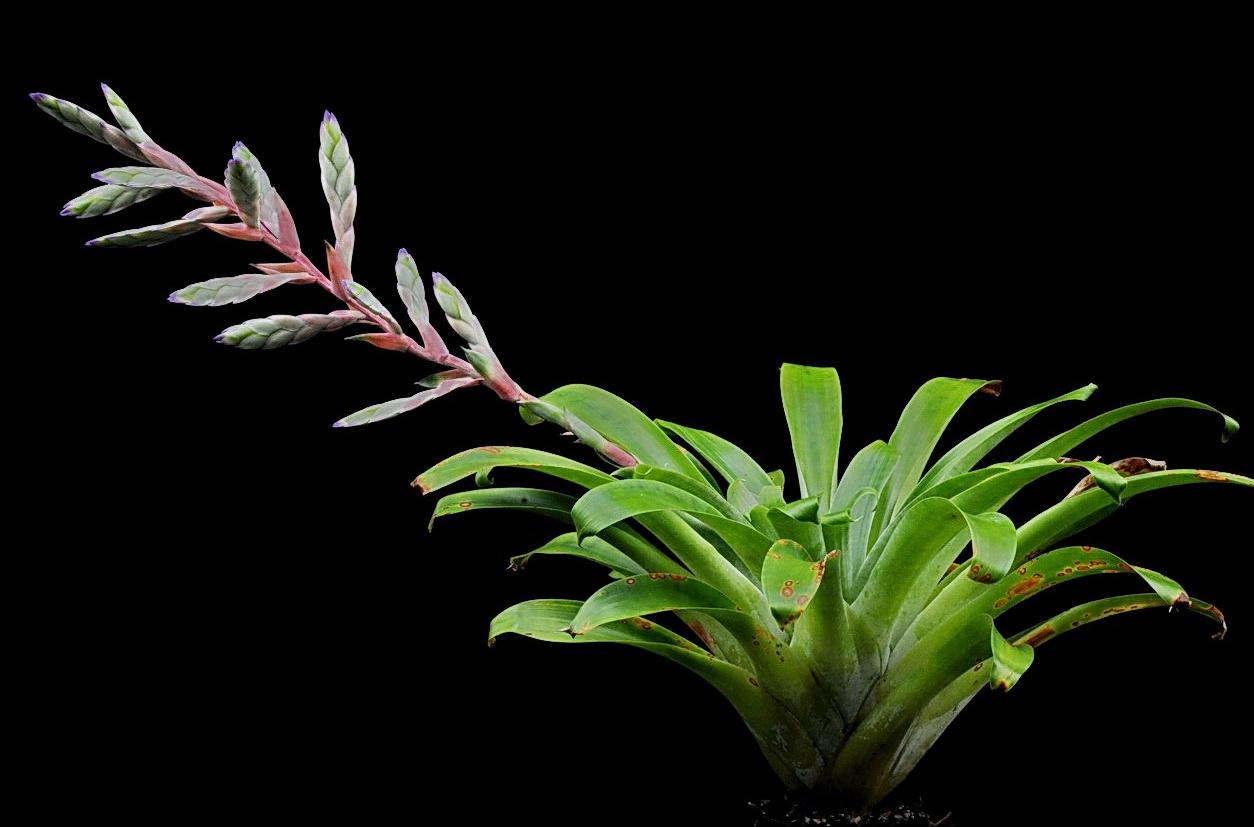
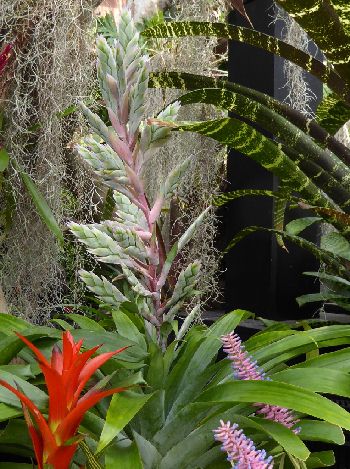
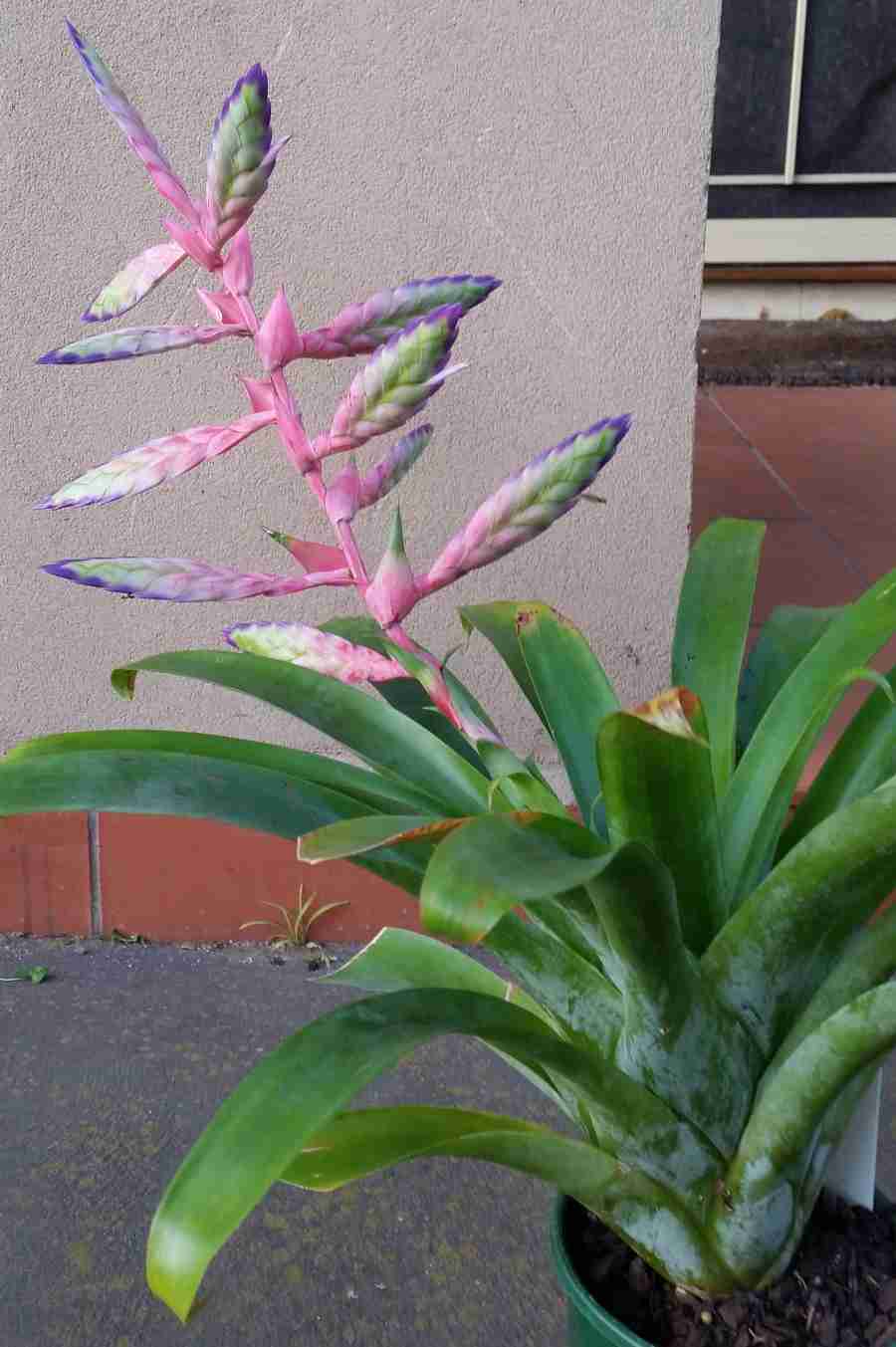
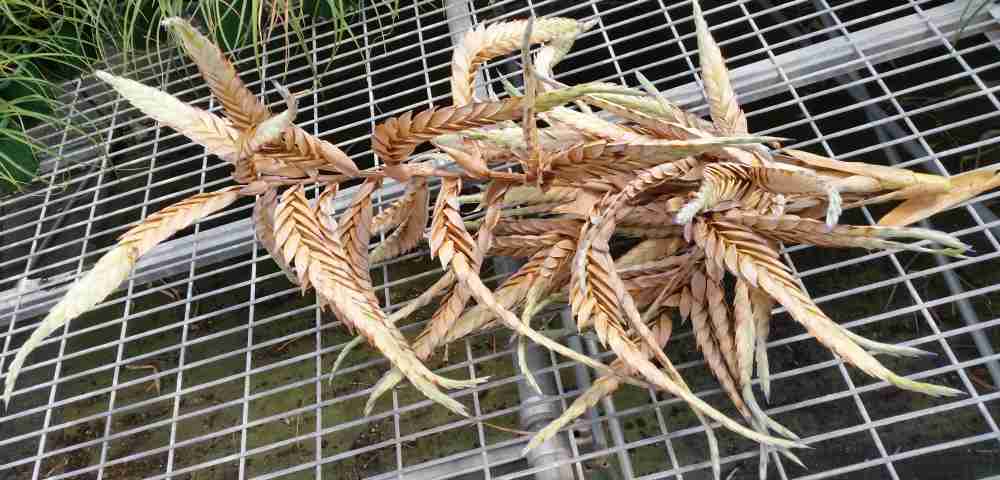
| Peter Tristram 12/11, approx 70cm diam. |
Chris Larson 12/14. From Amazonian side of Andes in Nth Peru ~1800m. |
Chris Larson 01/16 |
Chris Larson 01/16 ... "This plant has been in the kitchen for months. It lasts a good while. I have had one in the greenhouse unheated over the last winter so it is hardy.
I posted a pic of this plant last year which did not have this colour at that time. It can, like other Peruvian tillandsias, continue to spike over 2 seasons. This is what happened to the one that produced the dead spike on the bench. The latest flowering plant here has produced a flower at a much smaller size, and therefore it has not flowered with as many branches or as large as some others I’ve flowered previously."
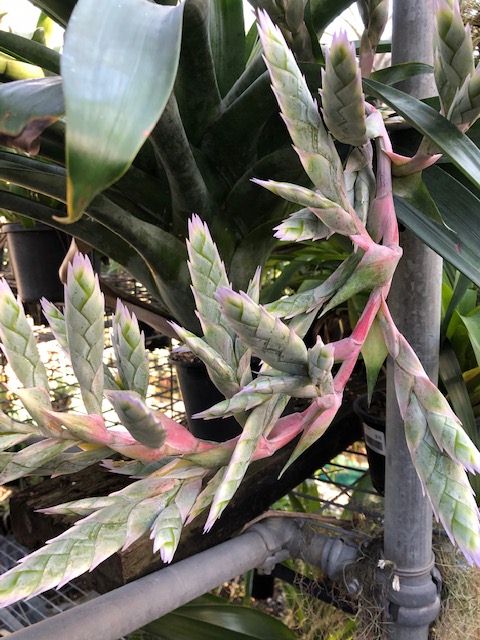
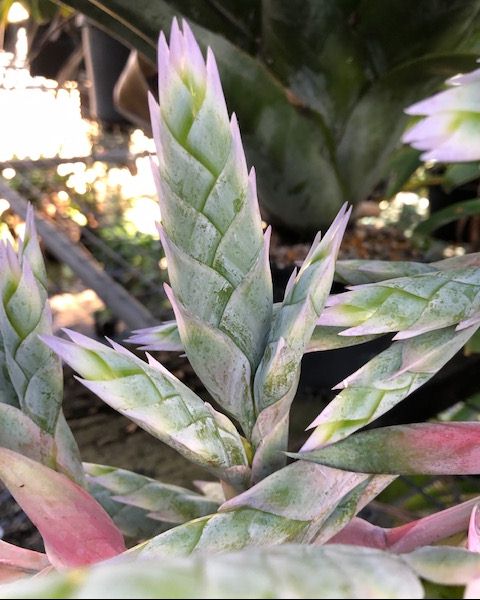
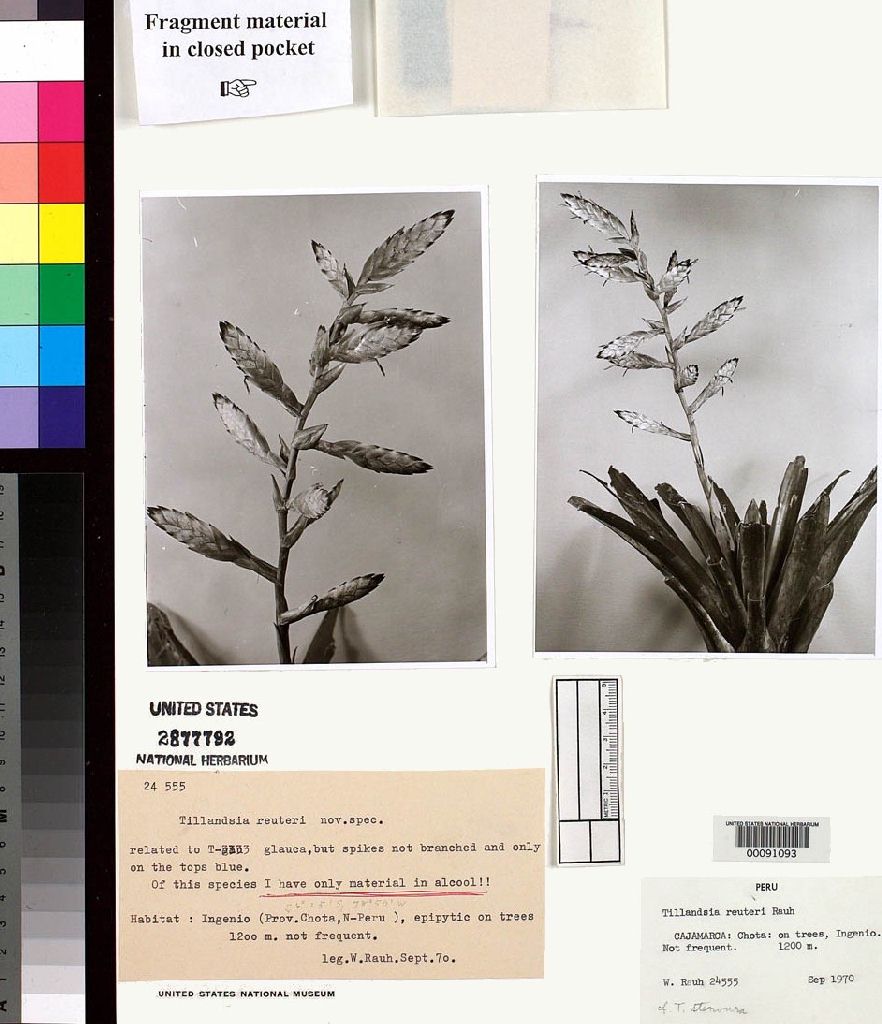
| John Olsen 12/18 |
Herbarium |
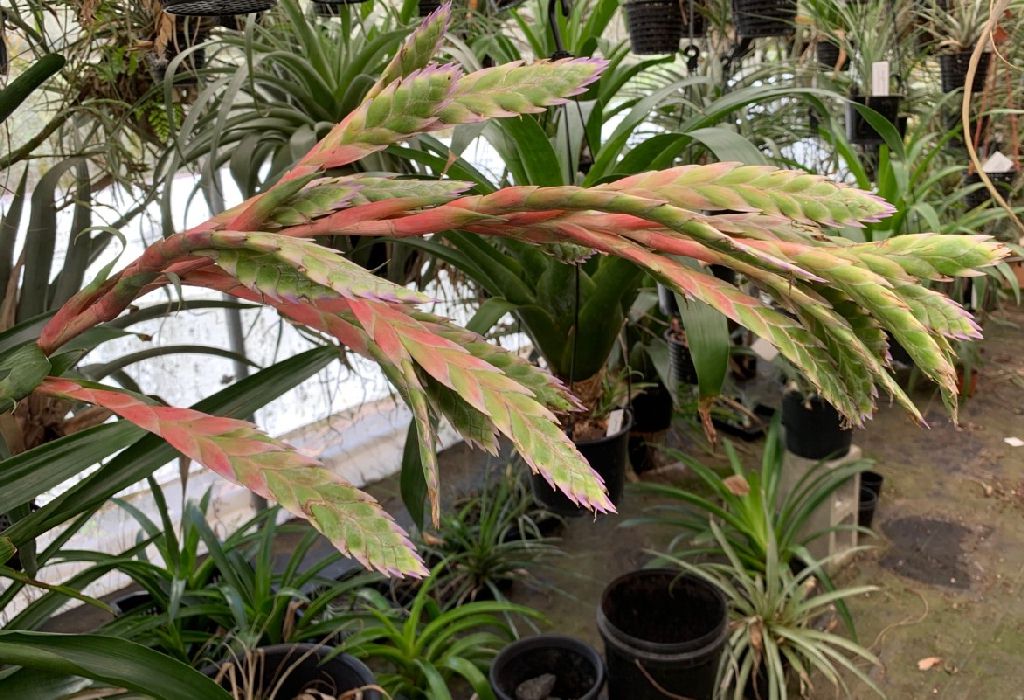
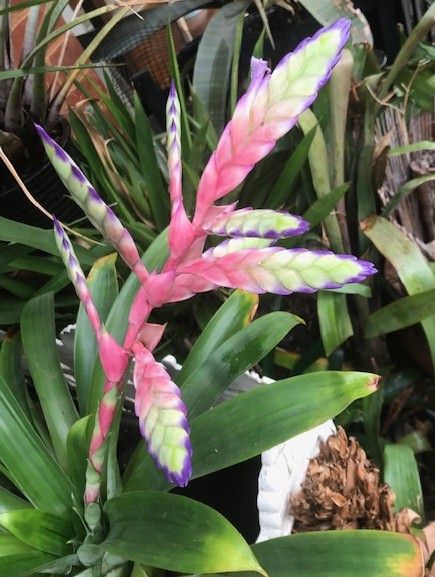
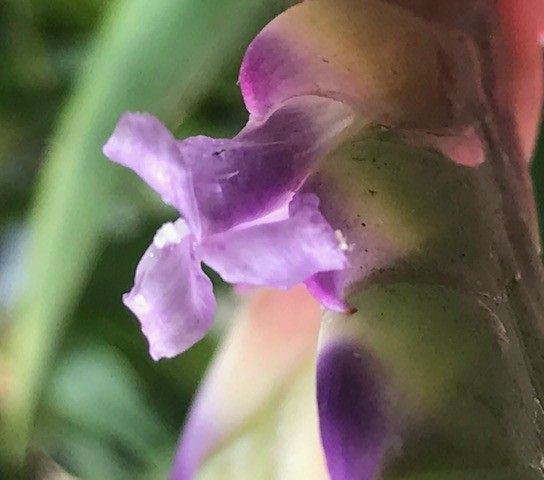
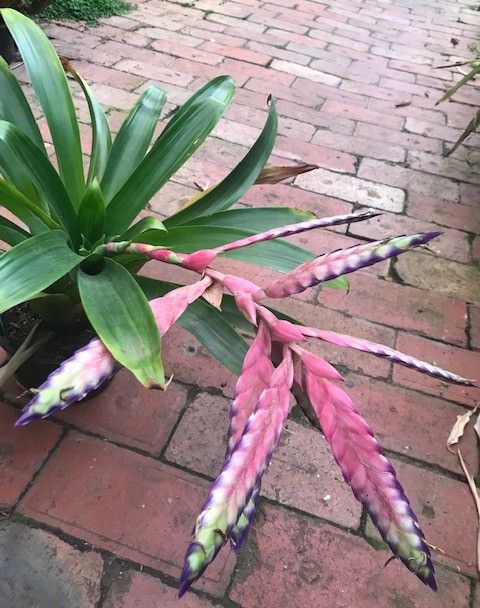
| Peter Tristram 03/20 |
Geoff Beech 03/20 |
Peter Tristram ... "One of the more recently introduced tank species is T. reuteri. These came from either Heidelberg BG in Germany (Heid on my tags) like this clone, or as seedlings that I purchased from Jeff Kent (JK on my tags) in 2012. It’s a lovely species and quite hardy too."
Geoff Beech ... "T. reuteri getting by in Melbourne but it doesn’t like the colder months."
Peter Tristram ... "Despite having to tough out winter in Victoria, your plant looks great. When mine bloom over summer, like this hot one, there isn’t the intensity of colour unfortunately."
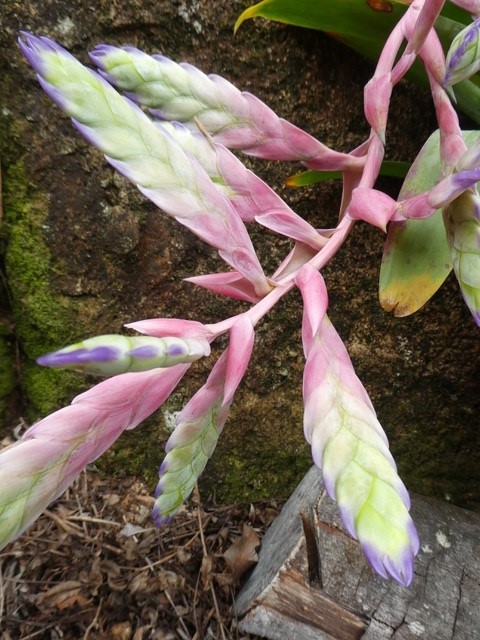
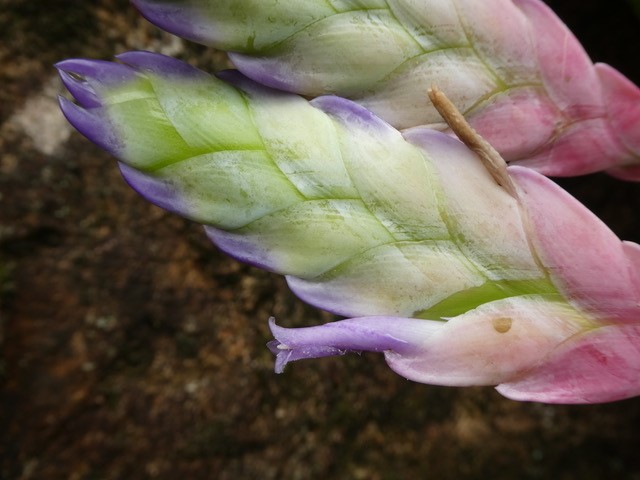
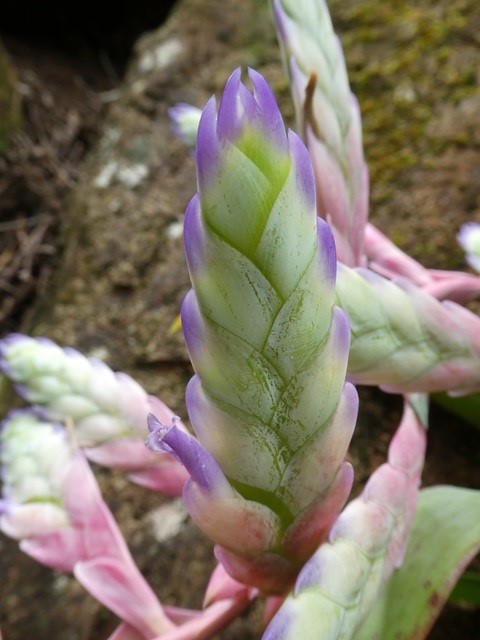
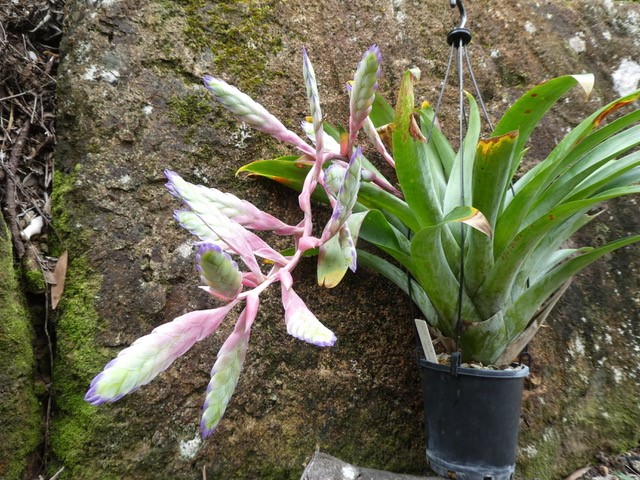 Chris Larson ... "Lovely, Bruce. Very slow here. But well worth the wait.
Chris Larson ... "Lovely, Bruce. Very slow here. But well worth the wait.
Those pale tones contrasting with the stronger colours at the tips are even better in real life.
One thing I'd like to bring up with culture: I have this same issue with the browning of the leaf ends - which I have always associated with a lack of nutrient, so the lower leaves are utilised by the plant - at least, I assume this when growing other plants. However, whichever method I grow T. reuteri under - pot vs mounted - high fert vs low fert - this still happens. There are a few other large tank - mainly cliff dwellers - which all do the same.
Anyone with any ideas on how to counter this? Or know the reason why this happens?"
Bruce Dunstan ... "Peter Paroz suggested the tip dying off on T. australis may be linked to a defficiency in Calcium."
Tillandsia reuteri, Rauh, Trop Subtrop Pflanz. 16: 43–45. 1976
Planta acaulis, florens usque ad 1m. alta. Folia numerosa in rosulam late infundibuli-formem, 50-60cm diametientem disposita.Vaginae oblongo-ovales, 18-22cm longae, 8-9 cm latae, inconspicuae, viridi-albae, subtus dense parvo-appresso-lepidotae, supra minus lepidotae. Lamina usque ad 30 cm longa, 4,5 cm lata, linguiformis, in apicem brevem acutum excurrens, utrimque dispersissime lepidota, praecipue subtus basi cano-cereo-pruinosa. Scapus inflorescentiae 30-40cm longus, erectus, 7-8mm diametiens, viridis vel ruber, cereo-pruinosus. Folia scapi laxe disposita, basalia subfoliata, superiora
erecta, longiora quam internodia, 6-7cm longa, late lingulata, acuminata, basi saepe punicea, cereo-pruinosa, ceterum viridia, utrimque dispersissime lepidota. Inflorescentia erecta, 30-40 cm longa, laxa, anguste pyramidalis, rhachidi leniter angulosa, punicea, ccrea, spicis 8-12 fere rectangulariter patentibus. Bracteae primariae longiores quam pars sterilis, spicarum, basales 5-6 cm longae, late triangulatae, acuminatae, basi puniceae, apicem versus virides vel virescenti-luteae, cereo-pruinosae. Spicae imbricatae, utrimque leniter convexae, usque ad 12cm longae, 3cm latae, 8-12-florae basi brevi sterili. Bracteae florales dense imbricatae, carinatae, durae, leves, 3,5 cm longae in apiccm fere pungentem 5 mm longum excurrentes, explanatae usque ad 2 cm latae, glabrae, supra modice lepidotae; basales virides, cereo-pruinosae, carina violaea, superiores in triente superiore atro-caeruleo-violaceae. Flores anguste tubiformes, usque ad 5,5 cm longi, sessiles. Sepala breviora quam bracteae florales, libera, posteriora acute carinata, plus minusve 2,6 cm 1onga, 4 mm lata, in apicem acutum excurrentia, pallide viridia, membranacea. Petala anguste linguiformia, usque ad 5,5cm longa, 8mm lata, basi alba, in triente superiore violacea, apices torquati, erecti, non reclinati. Antherae et stylus inclusae.
Habitat : prope Ingenio (Prov. Chota; Peruvia septentrionalis), epiphytica in sylvis montium, apud 1800 m s m.
Holotypus: Rauh Nr. 24555 (9.9.1970), in Herbario inst. bot. system. heidelbergensis (HEID).
Plant stemless, flowering to 1m high, leaves numerous, making a broad funnel shaped rosette, 50 – 60cm diam.
Leaf sheath longish oval, 18 – 22cm long, 8 – 9cm wide, indistinct, greenish white, underneath dense and small appressed lepidote, top side scattered lepidote.
Leaf blade to 30cm long, 4.5cm wide, tonguelike, tapering to a short sharp tip, both sides very scattered lepidote and particularly underneath, the bottom frosted grey waxy.
Scape 30 – 40cm long, erect, 7 – 8mm thick, green to red, frosted waxy.
Scape bracts laxly arranged, adjacent to the scape, the bottom ones leaflike, the upper ones erect, longer than the internodes, 6 – 7cm long, broad, tongue-like, acuminate, the bottom an abundant carmine red, frosted waxy, otherwise green, both sides very scattered lepidote.
Inflorescence erect, 30 – 40cm long, lax, narrow pyramidal, with weak edged, carmine-red, waxy rhachis, and 8 – 12 horizontal spikes.
Primary bract shorter than the spike but longer than the sterile section, the basal ones 5-6 cm long, broad triangular, acuminate, at the bottom carmine – red, green to greenish yellow towards the tip, frosted waxy.
Spikes imbricate, both sides weakly convex, to 12 cm long, 3cm wide, 8-12 flowered with a short sterile leafed base.
Flower bract densely imbricate, keeled, strong, smooth, 3.5 cm long, tapering to a sharp or almost sharp 5mm long tip, at its widest to 2 cm wide, naked, inner side scattered lepidote, the base green, frosty waxed with violet keel, the upper floral bracts the upper 1/3 dark blue – violet,
Flower closed tube, to 5.5 cm long, sessile.
Sepal shorter than the flower bracts, free, the back sharply keeled, ca. 2.6 cm long, 4mm wide, sharp tipped, pale green, membranous.
Petal narrow tongue shaped, to 5.5 cm long, 8mm wide, at the bottom white, the upper portion violet, erect, the tips spreading.
Stamens and Style enclosed.
Type locality: Mountains between Ingenio and Pomacochas ( Prov. Chota, Deptm. Cajamarca, North Peru ) Epiphytic.
Holotype Rauh # 24 555 (9th September 1970) (HEID)
T. reuteri is similar in habit to a dwarf form of T. glauca found by Rauh in North Peru. It differs in the sharp, acuminate, almost bent hooked floral bract. Is also related to T. stenoura.
Updated 23/12/21














